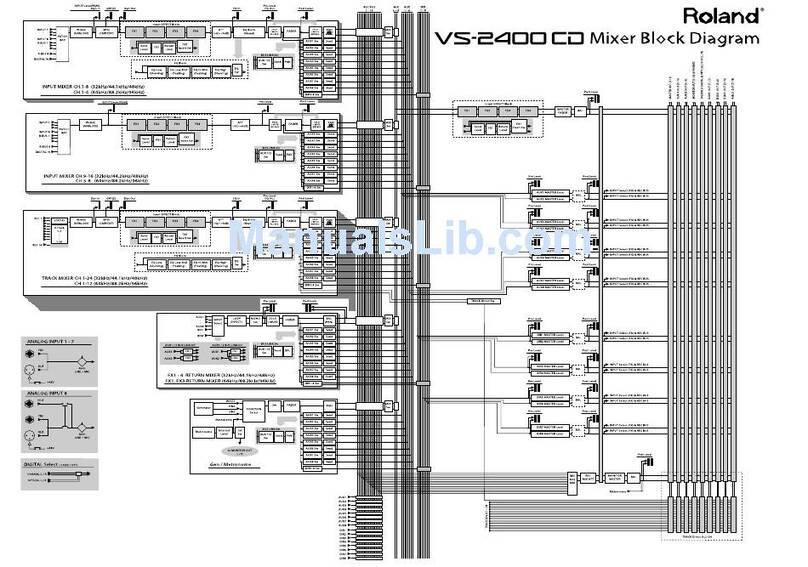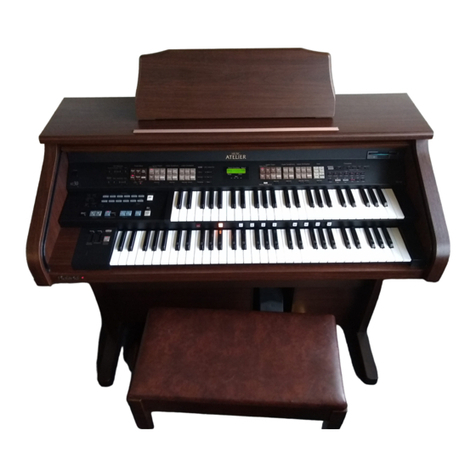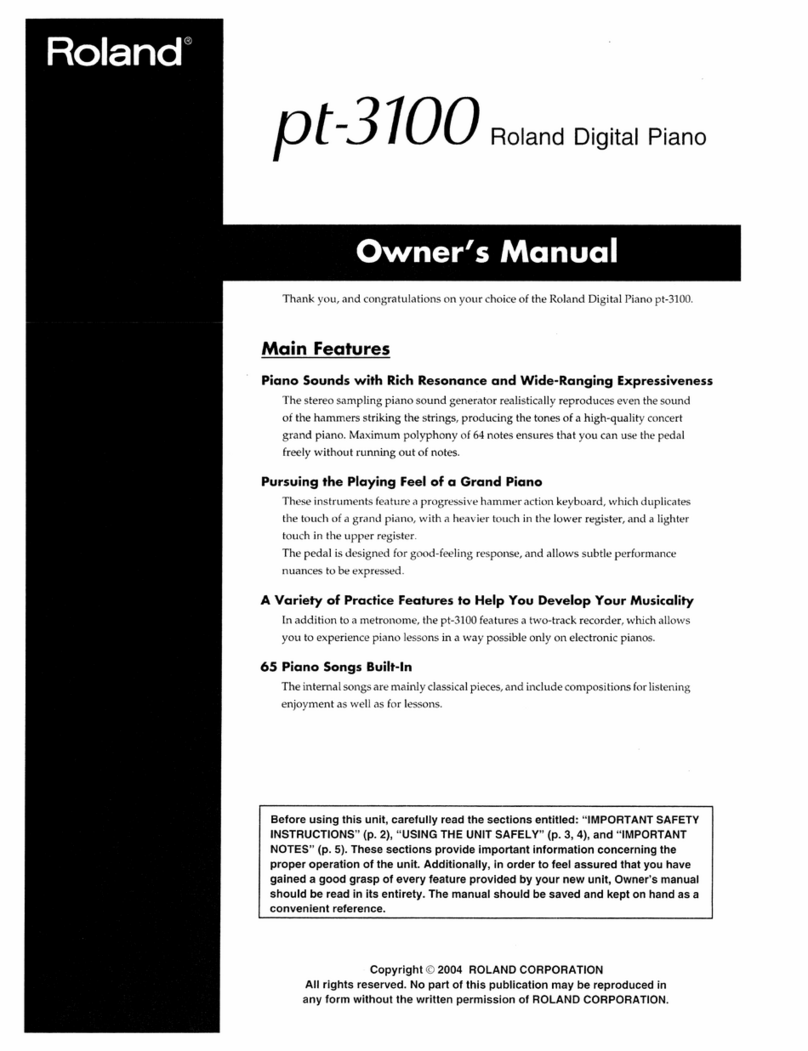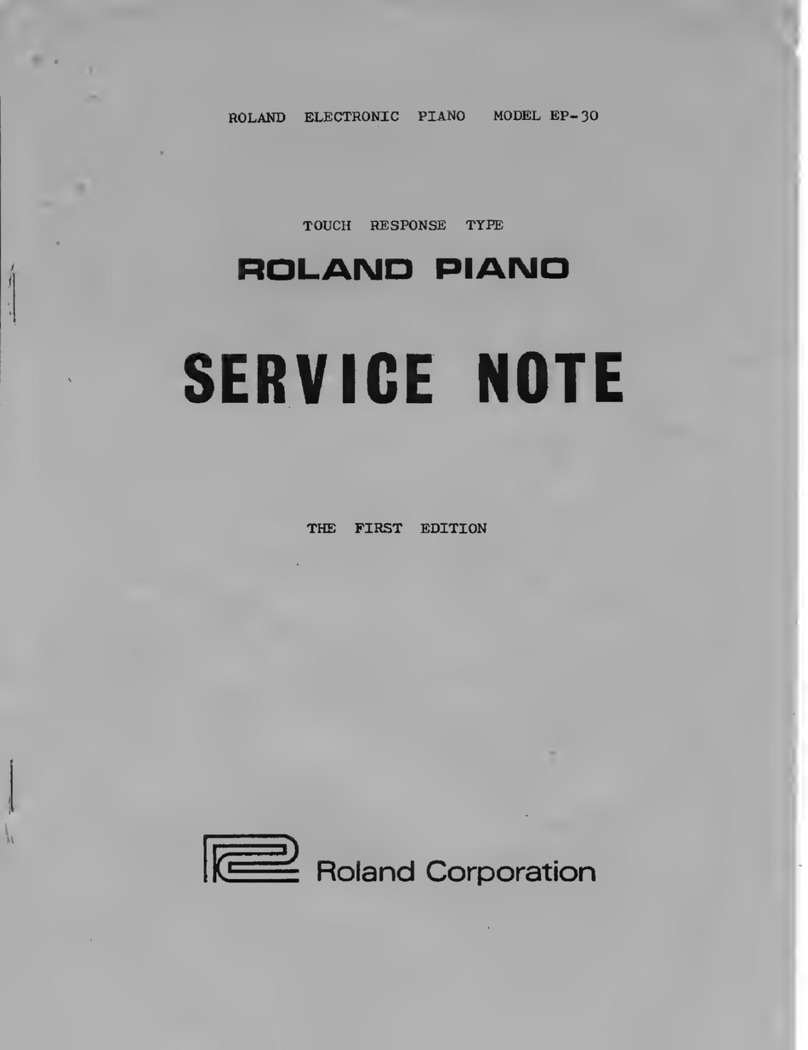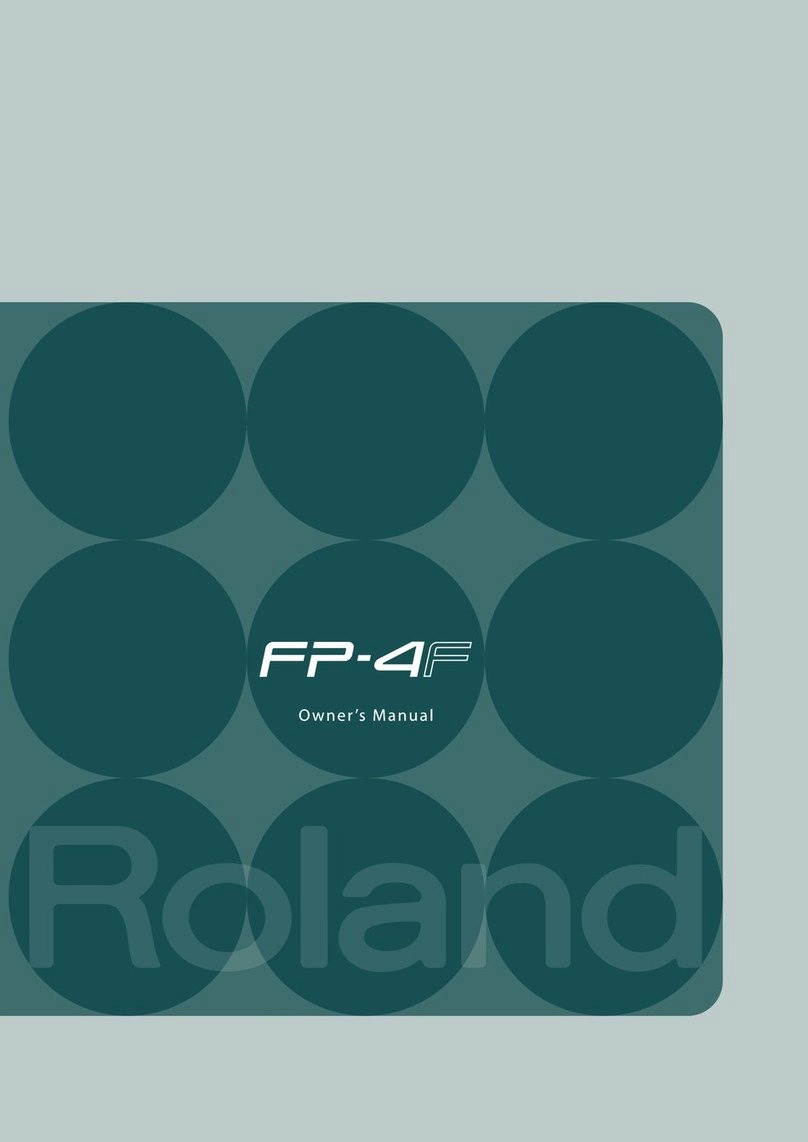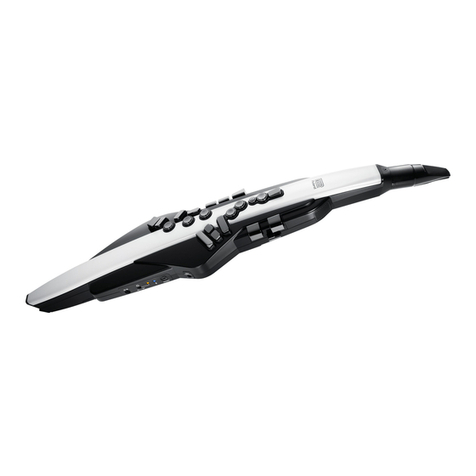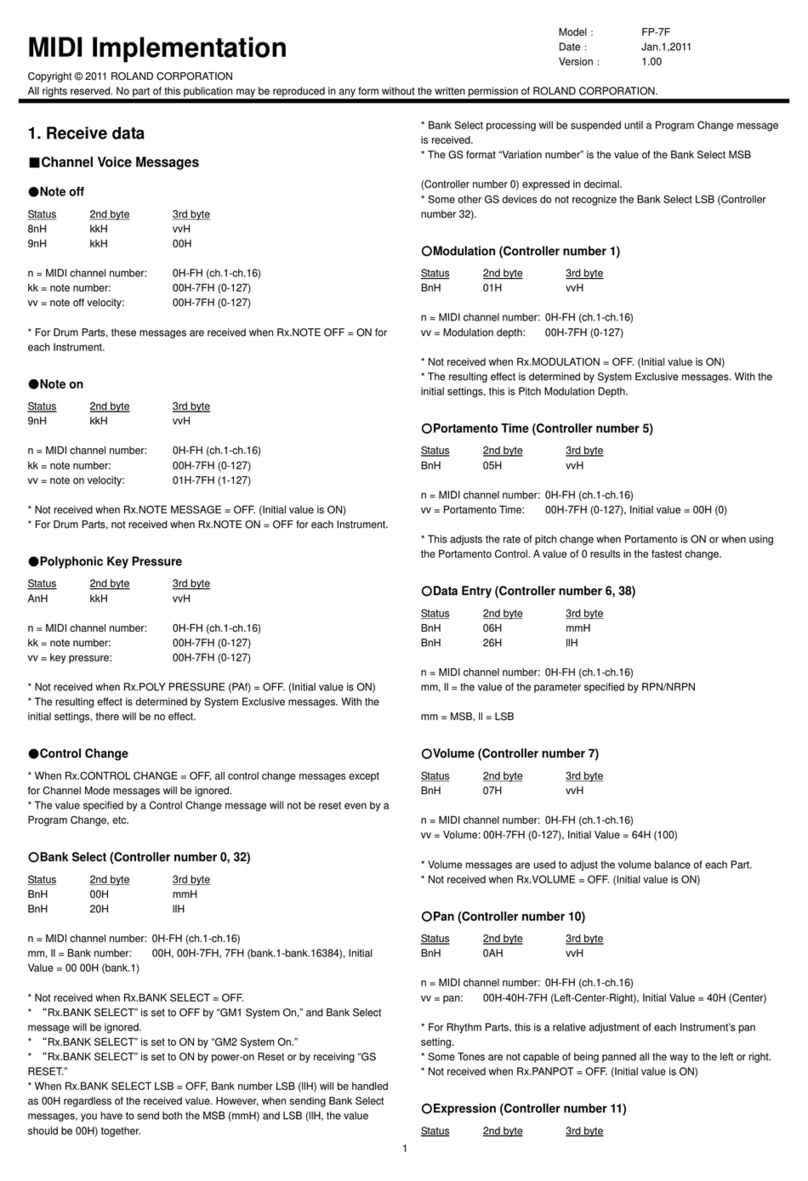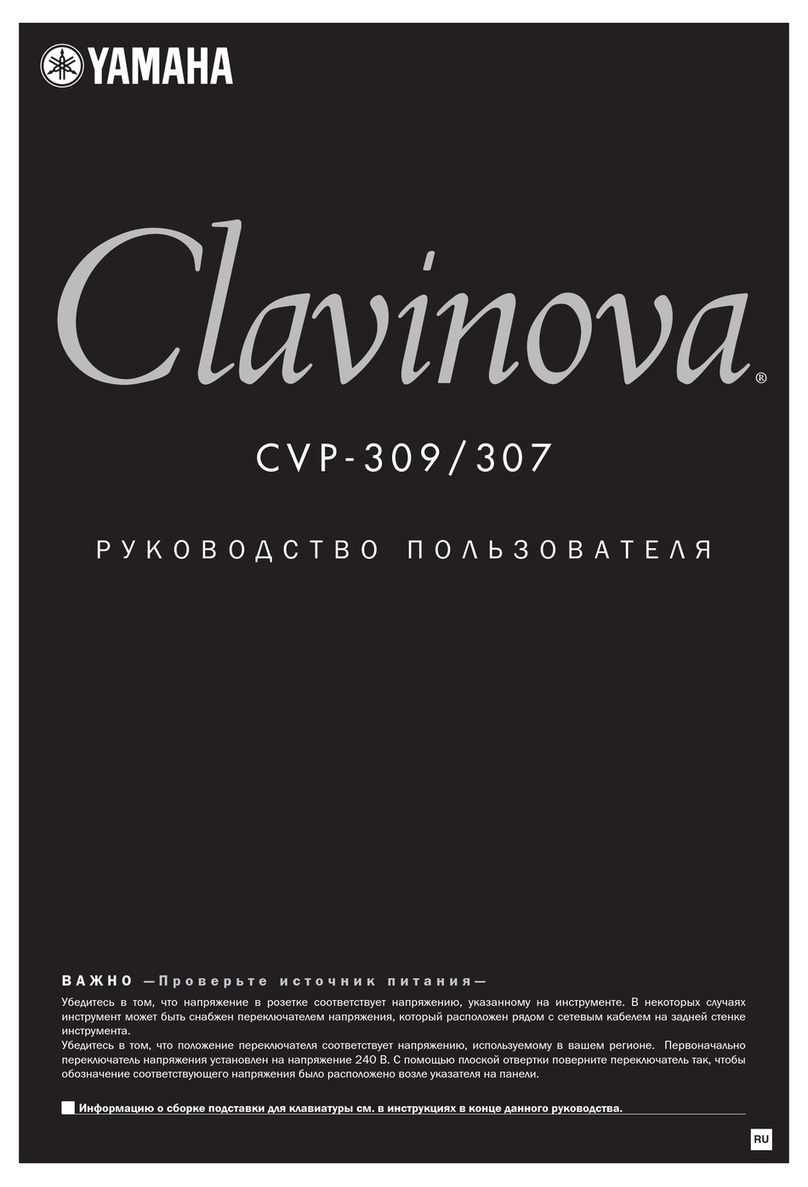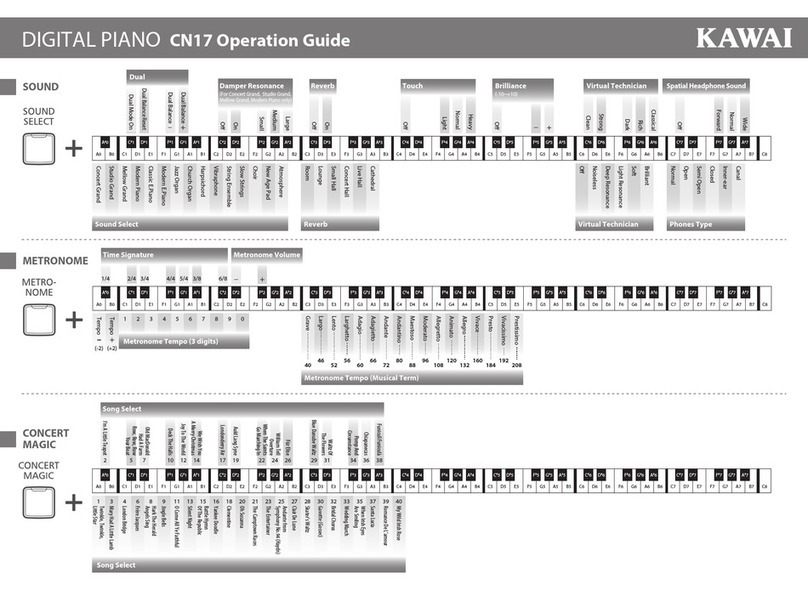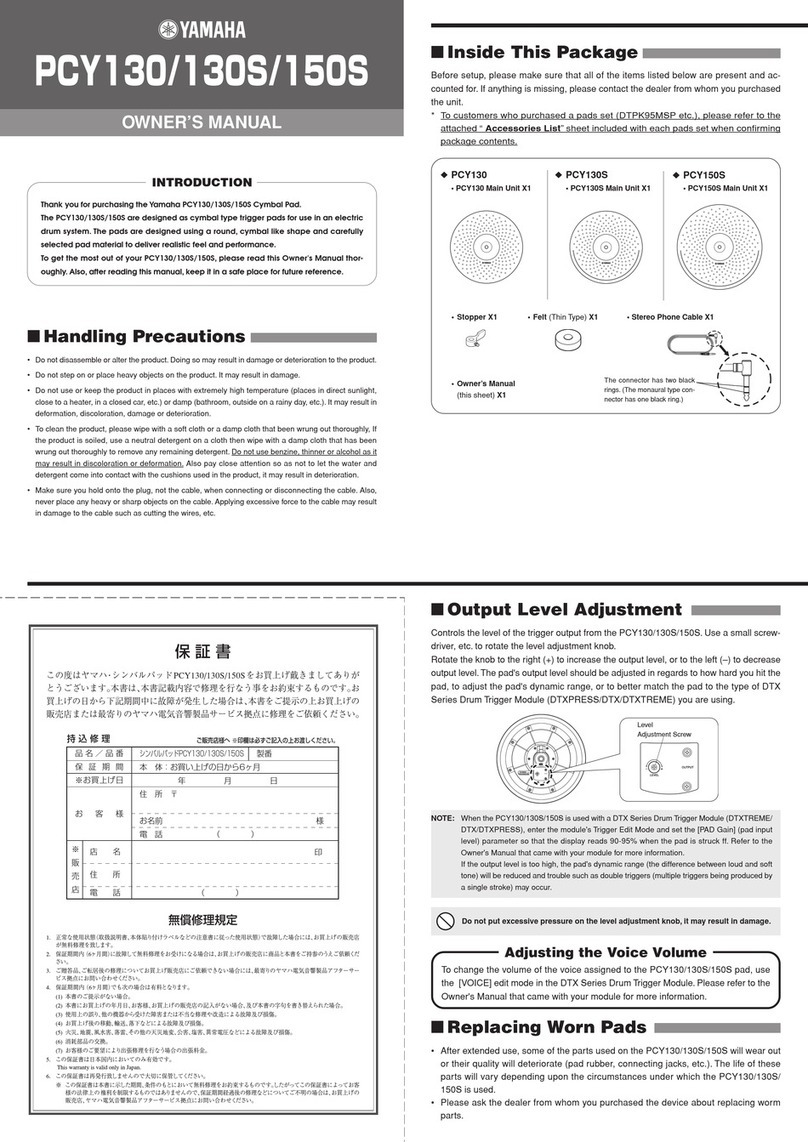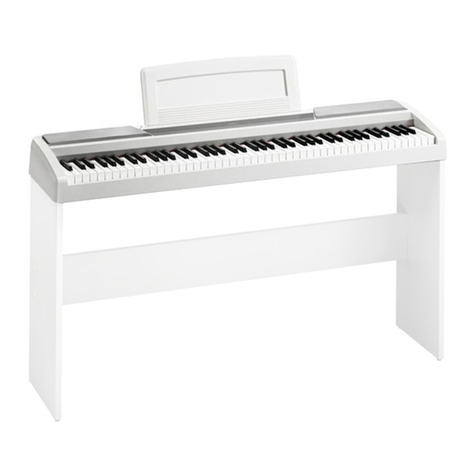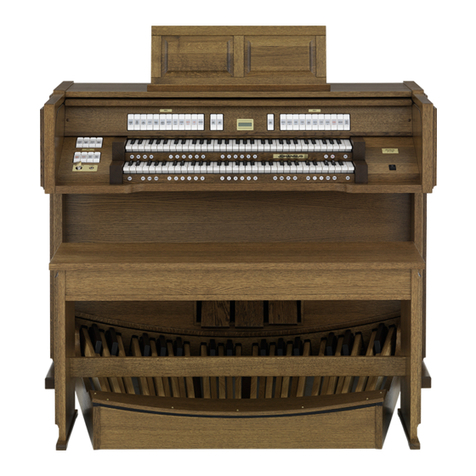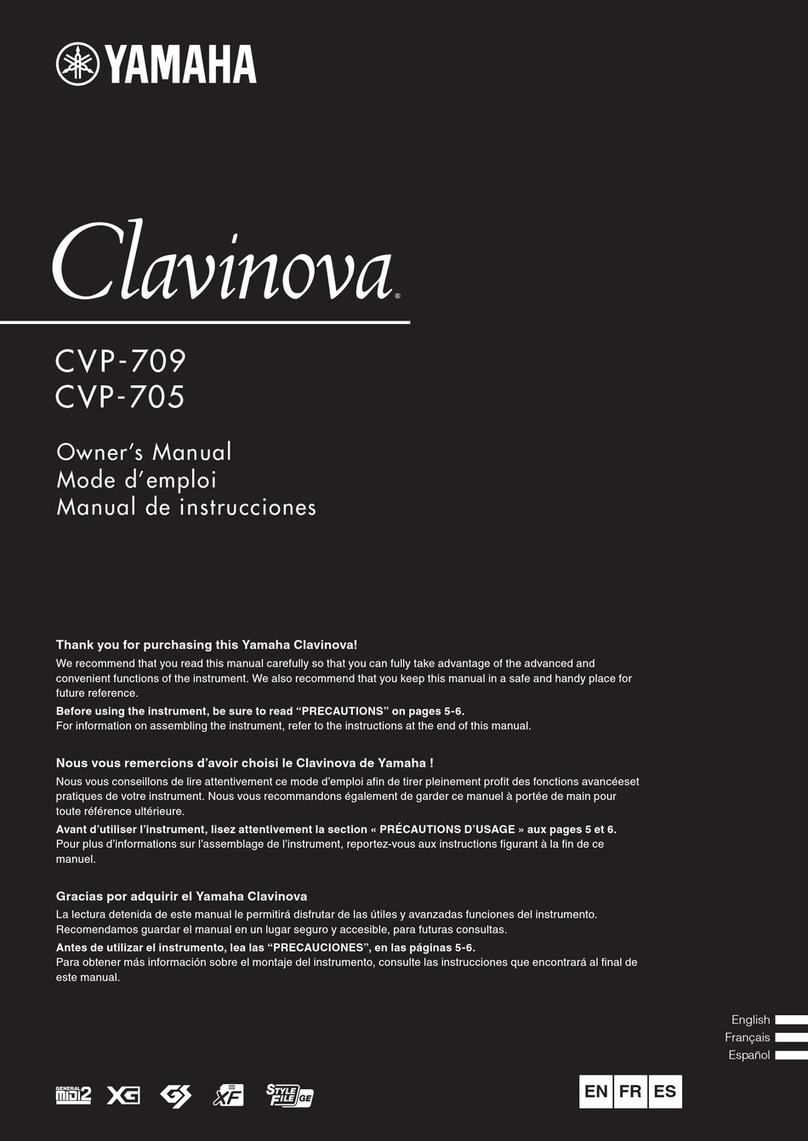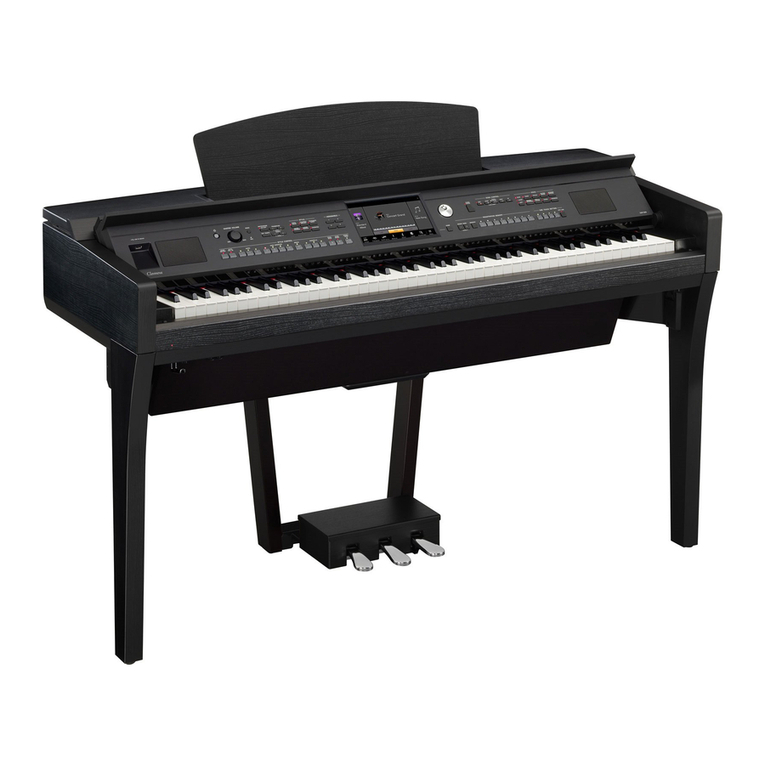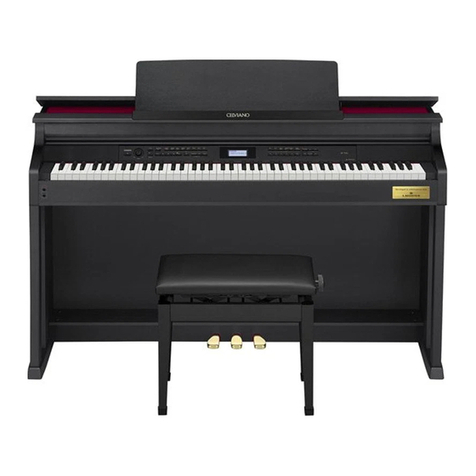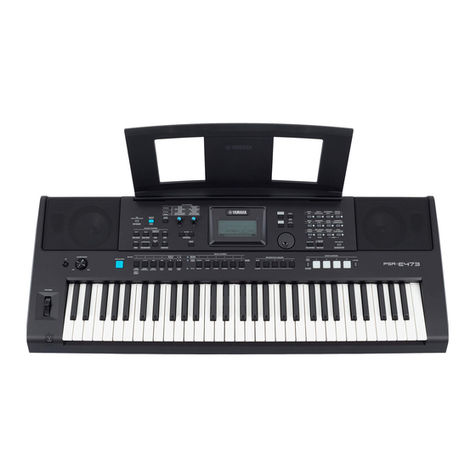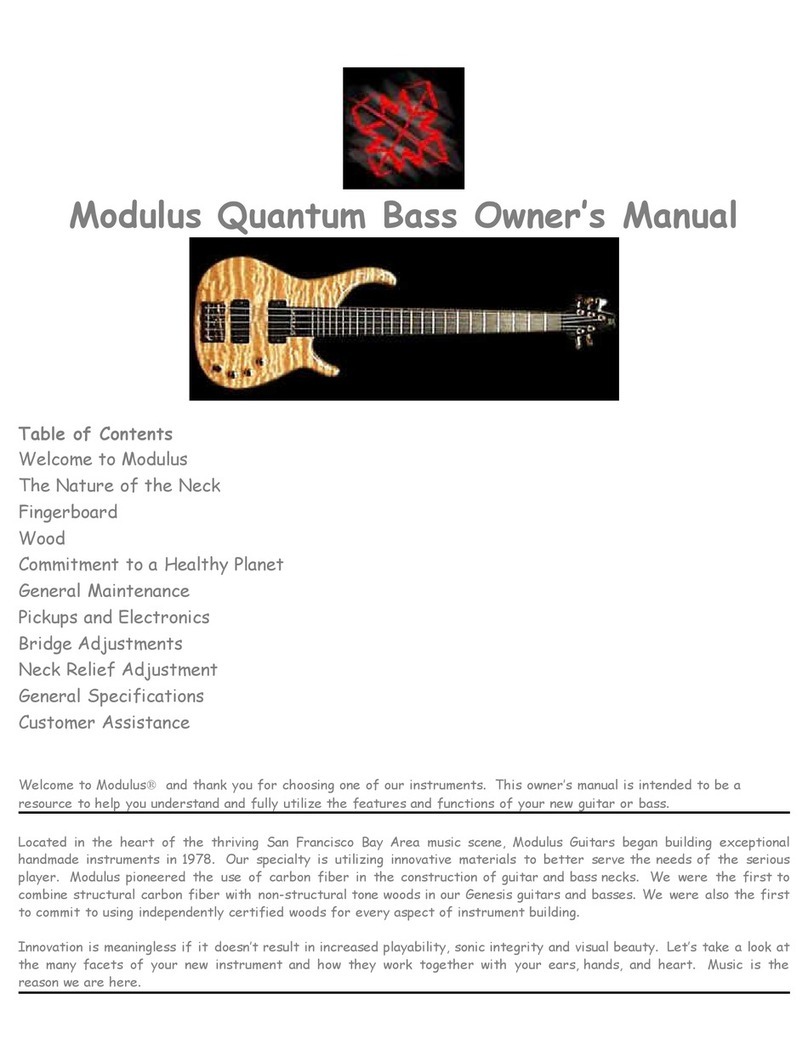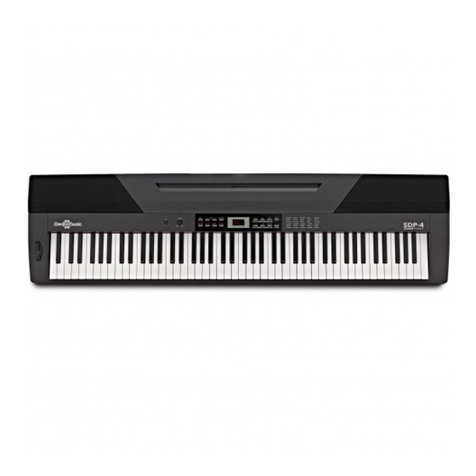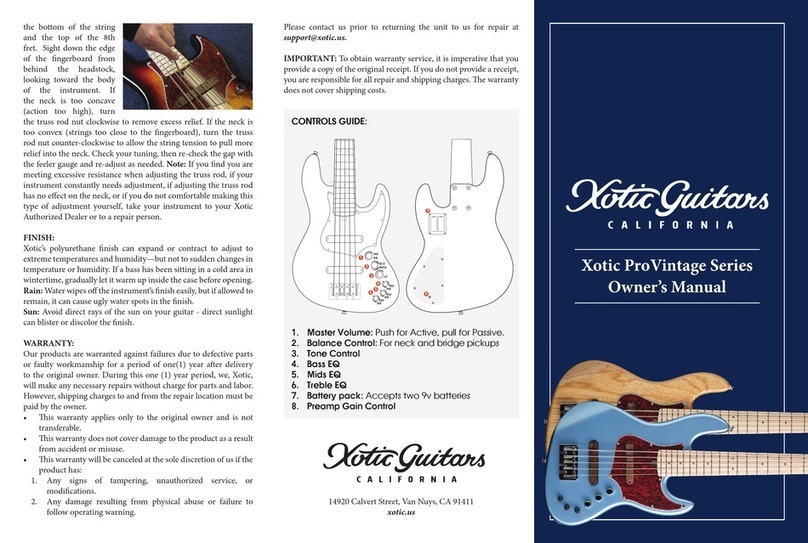IMPORTAWT NOTES
Power Supply
»The appropriate voltage to be used is shown on
the name plate on the rear panel. Be sure that it
nneets the voltage system in your country.
•Do not use the same socket that is used for any
noise generating device, such as amotor, or
variable lighting system.
•When setting up the MKS-20, be sure that all
the units are turned off.
•This unit might not work properly if the power
cable is plugged in with the unit turned on. If
this happens, simply turn the unit off, and turn it
on again in afew seconds.
•This unit might get hot while operating, but
there is nothing to worry about it.
Power Cord
When disconnecting the power cord from the soc-
ket, do not hold the cord but the plug. When the
unit is not to be used for along period, disconnect
the power cord.
Location
•Operating the MKS-20 near aneon or fluores-
cent lamp may cause noise interference. If so,
change the angle or position of the MKS-20.
Avoid using the MKS-20 in extreme heat or
humidity or where it may be affected by dust.
Cleaning
•U^ asoft cloth and clean only with amild
detergent.
»Do not use solvents such as paint thinner.
Memory Backup
®The MKS-20's memory back-up system is fully
supported by abattery. Normally, the battery
replacement is required every five years, but
the first replacement may be needed even
before that depending how many months had
passed before you bought it. Please ask for
your local Roland dealer for replacement.
Save the data in memory onto acartridge or
make asynthesize memo of each tone color,
before having the MKS-20 repaired. The data
may be accidentally lost during repairing pro-
cess, and if it happens, there is no way to re-
trieve it.
Bescheinigung des Herstellers /importeurs
Hiermit wird bescheinigt, daB der/die/das
ROLAND DIGITAL PIANO MODULE MKS-20
(Gerat, Typ. Bezeichnung)
in Ubereinstimmung mit den Bestimmungen der
Amtsbl. Vfg 1046 /1984
{Amtsblattvertiigungl
funk-entstort ist.
Der Oeutschen Bundespost wurde das Inverkehrbringen dieses Gerates
angezeigt und die Berechtigung zur Uberpriifung der Serie auf Einhaltung
der Bestimmungen eingeraumt.
Roland Corporation Osaka /Japan








